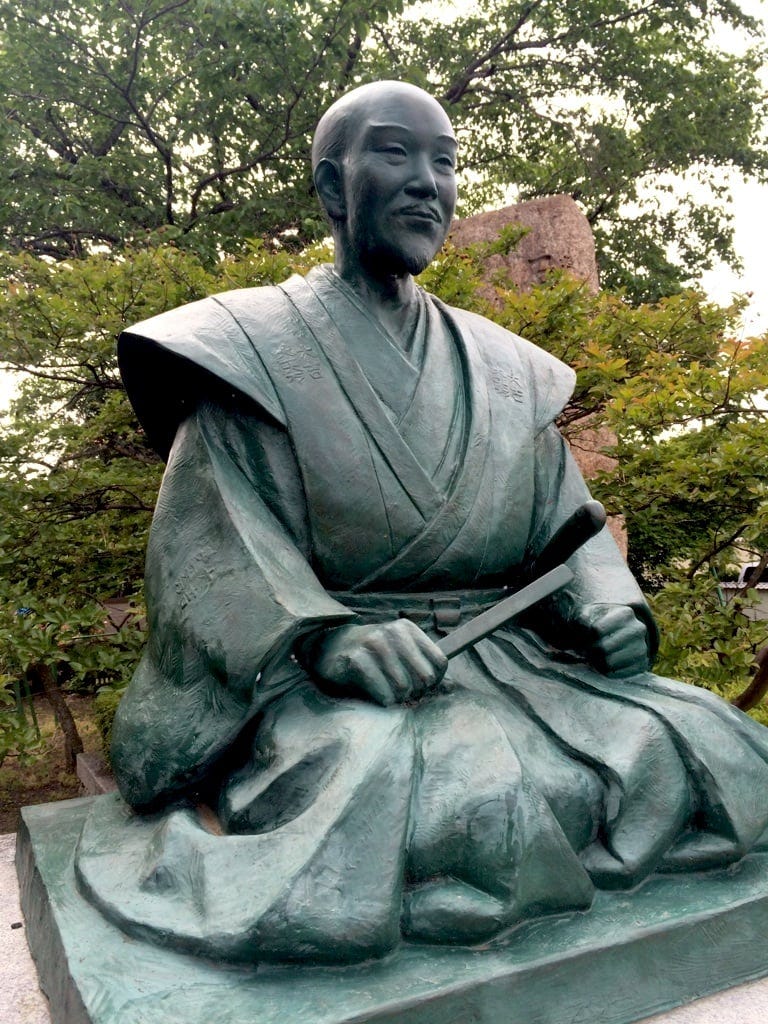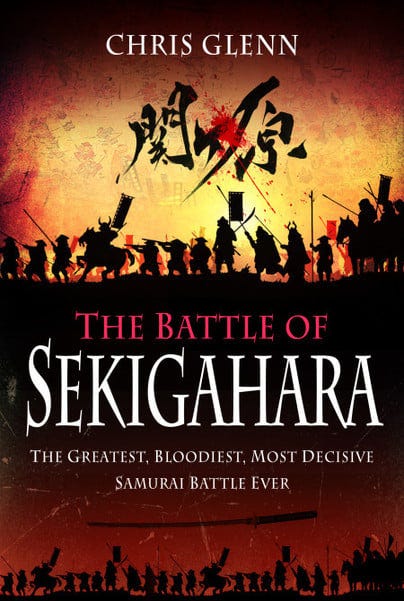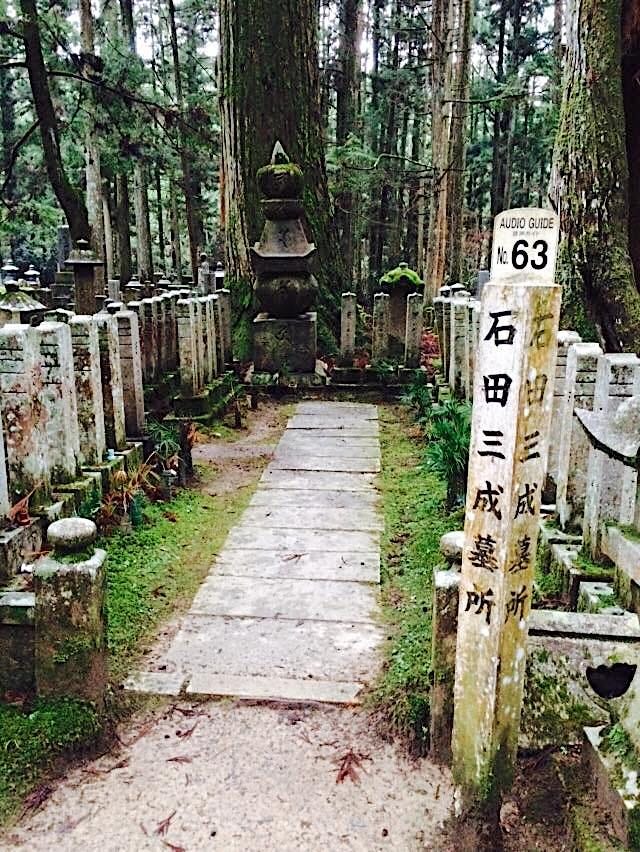Ishida Mitsunari Executed!
On November 6, 1600, Ishida Mitsunari, Konishi Yukinaga and Ankokuji Ekei were executed for their "crimes" at Sekigahara
On November 6, 1600, Ishida Mitsunari, leader of the Toyotomi Loyalist Western Forces at the Battle of Sekigahara, western allied Konishi Yukinaga and Ankokuji Ekei were executed for their "crimes" at the Battle of Sekigahara.
All three had turned and fled the killing fields of Sekigahara in the closing hours of the great battle as the Western forces collapse was imminent.
Ishida Mitsunari was later captured by Tanaka Yoshimasa, in the village of Ibuki no Furuhashimura. Mitsunari had immediately fled not to his castle at Sawayama as would have been expected, but to the Hokekyo Sanju-in Temple, as the head priest had been one of his childhood teachers.
"What is it that you need?" the kindly old priest is said to have asked when confronted by an exhausted and frightened Mitsunari, expecting an answer of food, water, and shelter. Instead, Mitsunari, belligerent as ever answered "Ieyasu's head!"
The priest then hid his former pupil in a rock cave behind the temple. When Tanaka finally found him, Mitsunari was hiding within the cave, still dressed in the clothes he'd worn under his armour at the battle. Although most disheveled, and with a torn and battered straw rain hat covering his now unkempt head, hidden in the back of his sash was a farmer’s sickle.
Tanaka was expecting resistance, but much to Tanaka's relief, Mitsunari gave in quietly, handing the wakizashishort sword that had been presented to him by Hideyoshi to Tanaka in a mark of defeat. Mitsunari was tired, wet, cold, and afraid. He had not eaten properly for days and was suffering from an upset stomach. The usually proud and arrogant daimyo was captured and turned over to the Eastern allies in a sad and sorry state.
The captured trio of Ishida Mitsunari, Ankokuji Ekei, and Konishi Yukinaga were publicly exhibited around the Sakai area of Osaka with metal rings placed around their necks and, in Mitsunari’s case, dressed in an embarrassing red and white short-sleeved kimono. In Osaka, Mitsunari was made to shout out his alleged crimes in a loud voice and describe the troubles he had caused as a further embarrassment. The three of them were further exposed to public ridicule in Kyoto. The very next day, November 6, they were executed at Rokujo-ga-hara, the dry riverbed of the Kamo River in eastern Kyoto. Their heads were then put on display beside the city’s Sanjo Bridge.
A well-known story is that on his way to the execution grounds, Mitsunari was offered a persimmon from a bystander, but refused it on the grounds that it “would be bad for my indigestion”. Konishi, his partner in death, is said to have remarked that as they were about to be put to death, it was hardly necessary to consider his digestion. Mitsunari replied that, "As one can never tell how things are going to turn out, one must at all times take care of one's health.”
Konishi was correct. Less than an hour later all three were ushered into an area surrounded by rudimentary bamboo fencing. They were lined up, restrained by ropes in a kneeling position on straw mats a few meters apart. A small hole had been cleared from the riverbed in front of them to catch the heads.
A large crowd is said to have gathered to watch as the samurai executioners took their positions, standing to the left of each man, with swords at the ready. Ishida Mitsunari, Konishi Yukinaga and Ankokuji Ekei were not afforded the honour of committing seppuku. They were beheaded. The worst form of punishment for a samurai, particularly one of rank, executed like a common criminal, and in full view for all to see.

The heads were then publicly displayed near the entrance to Kyoto, but soon after Ishida Mitsunari's head went missing one night. It appears that a merchant, long indebted to Mitsunari had stolen the head and taken it to a nearby temple for safekeeping. It was then forgotten about about.
Mitsunari's skull was re-discovered in 1907 in Kyoto's Sangen-in temple. Years later, using the skull as a base, Mitsunari’s facial features were recreated by Dr. Nagayasu Shuichi, former Chief of engineering of the Tokyo National Research Institute of Police Sciences at the request of photographer and descendent of Mitsunari, Mr. Ishida Takayuki.
It appears he had an elongated head and a pronounced defect in his teeth that caused them to bow outwards. The rest of his skeleton was later studied by Dr. Ishida Tetsuro, (no relation) of the Kansai Idai Medical University.
Photos of the skull and the reconstructed head appear in my non fiction book, The Battle of Sekigahara, which outlines the characters and political situation in lead up to the Battle of Sekigahara, (as portrayed in Shogun) before detailing the battle itself and the aftermath of the greatest samurai field battle in history. If you enjoyed Shogun, then discover what really happened! The Battle of Sekihagara, available from all booksellers, but cheaper and faster direct from the publisher, Frontline Books / Pen & Sword
Ishida Mitsunari's grave on Mt. Koya.
Established 1,200 years ago, the 120 temple Shingon sect headquarters on the most holy Mt. Koya is the site of Japan's biggest samurai graveyard. A large majority of the famous warriors from across Japan and history are remembered here. This is not where the bodies of the deceased lie, but where locks of hair or fingernail clippings have been interred beneath the memorial stones.
This is the moss covered grave of Ishida Mitsunari, executed November 6, 1600 following his defeat and capture after the Battle Of Sekigahara.
Ishida Mitsunari was executed for “crimes”. Indeed he is guilty of having remained loyal to the Toyotomi clan, and for having stood up to the man who shredded the peace forged by Toyotomi Hideyoshi, Tokugawa Ieyasu.









I've been waiting for this article with impatience! Excellent chronicle. I think Ishida should have become a Sepukku on the battlefield to take responsibility for those who went into combat and lost, instead of cowardly fleeing and hiding in disguise. He would have been spared the horrible dishonor he had to live through. I can imagine Lady Cha-cha's panic when she found out about the execution! There's a reason she sent a General to swear that they had nothing to do with all that.